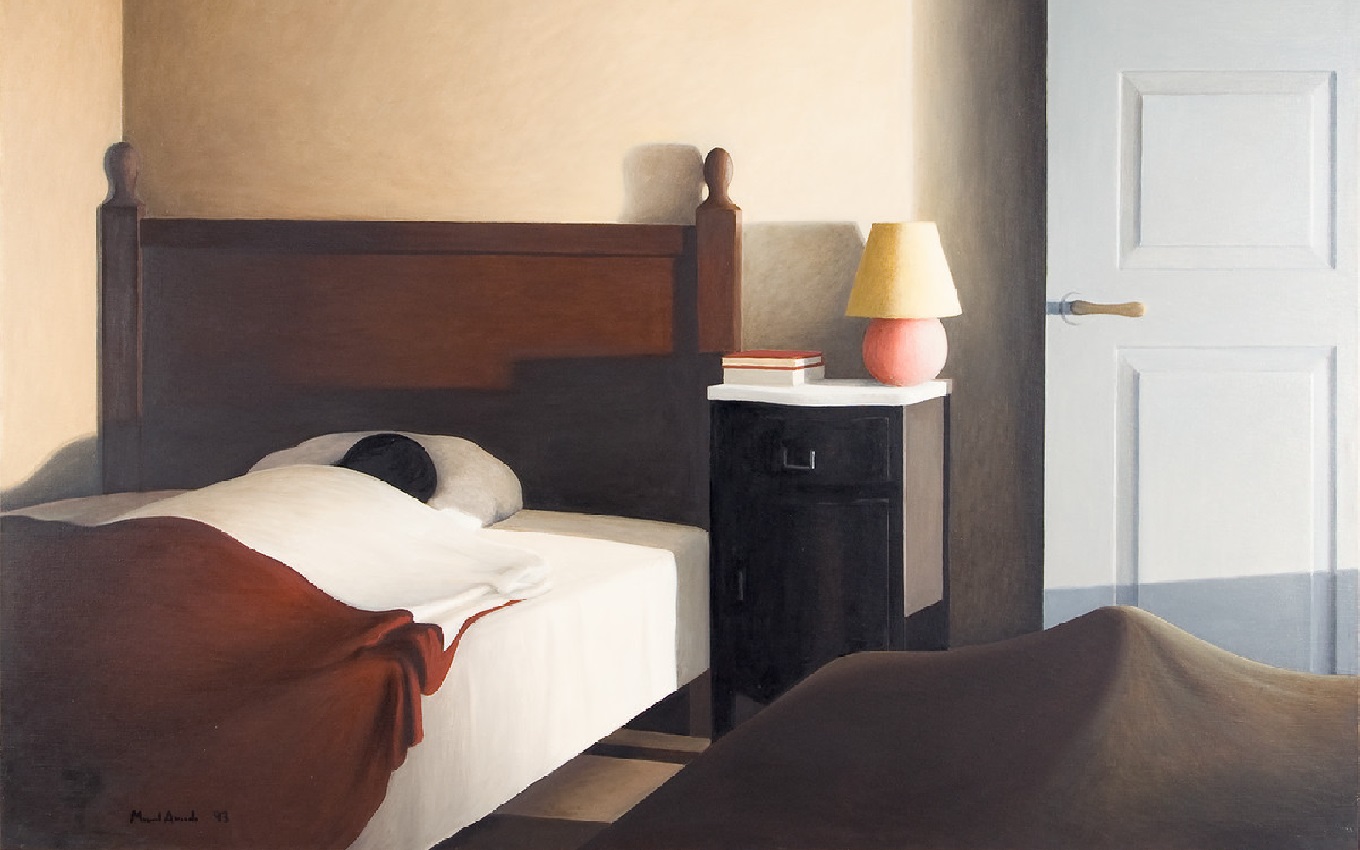Presentation of the Online Catalogue Raisonné of the work of Manuel Amado
Event Slider
Date
- / Cancelled / Sold out
Location
Auditorium 3 Calouste Gulbenkian FoundationThis session begins with an introduction to the work of Manuel Amado, followed by a presentation of the Online Catalogue Raisonné of his painting. There will be a demonstration of the website, showing the tools that can be used to browse and consult it. As well as bringing together all the painter’s works, the Online Catalogue Raisonné also contains a range of complementary information, including texts by various authors on Manuel Amado’s painting, interviews, a list of exhibitions and a biography, thus forming an essential repository for a comprehensive knowledge of this artist, now available and accessible to the most diverse audiences.
Teresa Amado will also join the session.
LIVESTREAM
BIOGRAPHY
Manuel Amado was born on 13 June 1938 in Lisbon, fourth of the seven children of the writer and theatre director Fernando Amado and his wife Margarida Sotto-Mayor. He lived until the age of 19 in his grandparents’ large eighteenth-century mansion, Palácio Pimenta, now the Museum of Lisbon. He studied at the Colégio Moderno and from a young age performed in the theatre plays organised by the school. He was also an actor with the Mocidade Portuguesa [Portuguese Youth] theatre, directed by António Manuel Couto Viana, and he also took part in plays directed by his father at the Teatro Universitário de Lisboa. His interest in theatre endured throughout his life, although, after the age of 19, he only ever took to the stage again next to his friend, the artist Lourdes Castro, in 1984, in Almada Negreiros’ play Antes de Começar [Before Beginning], performed through ACARTE (the Animation, Artistic Creation and Education through Art Service) of the Calouste Gulbenkian Foundation’s Modern Art Centre, Lisbon. Over the course of his career, he created sets for various plays, which he thought was a ‘wonderful thing' to do.
Between 1957 and 1966, he studied architecture, at the same time as working in architect studios. He was forced to interrupt the course when he was called up for military service and later, with the outbreak of the colonial war in 1961, to serve as a non-commissioned officer in Angola, where he remained until 1963. He married Teresa Viegas in 1961, before he left. In 1964 his son Rodrigo was born, then Rita the following year and, in 1968, his daughter Joana. During this time, he painted intermittently. Two of his early influences in painting were De Chirico and Magritte. He took part in group exhibitions at the SNBA until Cruzeiro Seixas invited him to hold his first solo show in 1978. He exhibited regularly from 1983, and in 1987 decided to devote himself entirely to painting, dropping architecture. That year, he travelled to the USA and discovered the painting of Edward Hopper, which particularly moved him. Pedro Tamen and Nuno Júdice wrote poems in dialogue with his paintings. He mostly painted thematic series, sometimes returning to them after an interval of several years. The houses he lived in, cinema, the beach and the sea, transitory spaces and the theatre are the subject matter of his paintings. He died in Lisbon on 14 October 2019.
Mariana Pinto dos Santos
Programme
Welcome session
Guilherme d’Oliveira Martins, Trustee, Calouste Gulbenkian Foundation
Presentation by
Mariana Pinto dos Santos, Art historian and independent curator
Rui Ribeiro, Responsible for the Online Catalogue Raisonné
The Calouste Gulbenkian Foundation reserves the right to collect and keep records of images, sounds and voice for the diffusion and preservation of the memory of its cultural and artistic activity. For further information, please contact us through the Information Request form.

